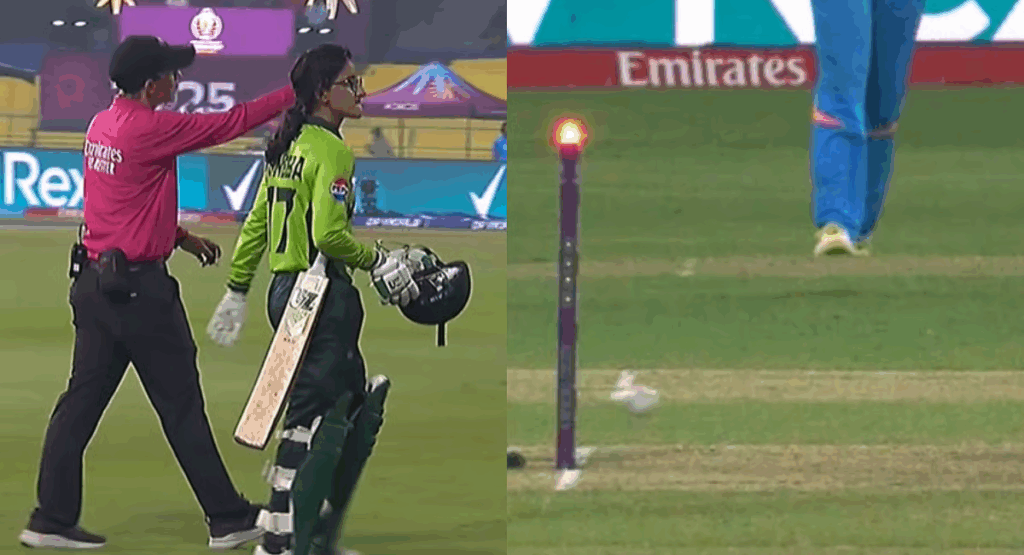
Muneeba Ali’s run-out controversy during the India vs. Pakistan Women’s World Cup 2025 match quickly grabbed headlines. Fans, commentators, and players alike debated whether the dismissal was fair. To understand the situation clearly, we need to examine the incident closely and break down the MCC Law 30.1.2 that governs such scenarios.
In the fourth over of Pakistan’s chase, India’s Deepti Sharma threw the ball toward the non-striker’s end. Muneeba Ali, the opening batter, appeared to be safe initially. The third umpire first ruled her not out after replays showed her bat behind the crease. However, after a detailed review, the decision changed to out. This reversal surprised the Pakistan team and sparked confusion among fans worldwide. Clearly, the situation called for a deeper look into the rules of cricket.
According to MCC Law 30.1.2, a part of a batter’s bat or body must touch the ground behind the popping crease for them to be in their ground. However, the umpire can declare the batter out if they are neither running nor diving, and their bat loses contact with the ground as the stumps break.
In Muneeba’s case, her bat left the ground before the stumps were broken, and she was not actively running or diving. Therefore, the third umpire’s final decision to declare her out followed the law accurately. This interpretation aligns with official cricket rules and ensures fairness, even if it initially appears controversial.
The ruling triggered a brief stoppage in play as the Pakistan team questioned the umpire’s call. Many fans expressed confusion on social media, debating whether the decision was fair. However, Pakistan’s fast bowler Diana Baig clarified later that the issue had been resolved. She emphasized that the team respected the umpire’s decision and preferred to move on rather than dwell on the incident. Meanwhile, the match continued without further disruption, highlighting the professionalism of both teams under pressure.
The controversy mainly arose because the decision seemed counterintuitive at first glance. Most spectators assume a batter is safe if they are stationary behind the crease. Yet, the MCC Law is precise about the batter’s bat contact with the ground. This strict interpretation often confuses casual viewers but maintains consistency in the game. Consequently, while the call looked harsh, it followed the official rules.
In conclusion, Muneeba Ali’s run-out controversy may have appeared dramatic, but the decision complied with MCC Law 30.1.2. The law clearly states that a batter who is neither running nor diving must keep part of their bat grounded behind the popping crease. Since Muneeba’s bat lifted prematurely, the third umpire correctly adjudicated her out.
Ultimately, this incident highlights how cricket laws can be complex and easily misunderstood. Muneeba Ali’s run-out controversy reminds fans and players alike that the game’s rules exist to ensure fairness, even in situations that feel controversial or unexpected.

